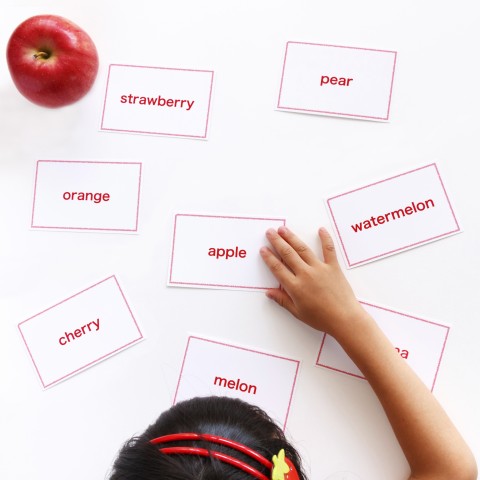The Role of Immersion in Language Acquisition: Living and Breathing the Language
Tuesday, September 12th, 2023Language is a bridge that connects individuals, cultures, and societies. The quest to learn a new language is often accompanied by excitement, challenges, and the ever-present question: What is the most effective way to master a new tongue? Among the various methods, immersion is a powerful approach that allows learners to live and breathe the language they aspire to conquer.
In this article, we will delve into the reasons why immersion is hailed as an effective language acquisition technique, exploring the type of immersion opportunities out there are the benefits they bring to the proverbial table.
1. Language Immersion Programs: Diving into the Deep End of Learning
Language immersion programs are immersive learning experiences designed to fully immerse learners in the target language and culture. These programs take learners beyond the confines of traditional classroom settings, plunging them into an environment where the language is spoken naturally and effortlessly. The essence of language immersion lies in its ability to replicate how humans naturally learn their first language: through exposure, context, and interaction.
2. How Language Immersion Programs Work
In a language immersion program, learners are surrounded by native speakers, authentic situations, and real-life contexts where the target language is used as the primary means of communication. This could involve living in a country where the language is spoken, participating in local activities, attending events, and engaging in day-to-day conversations. The goal is to create an environment where learners are learning the language and actively using it to navigate their surroundings and connect with people.
3. Types of Language Immersion Programs
A. Full Immersion Programs
These programs involve complete submersion into the language and culture. Learners are often required to use the target language for all interactions inside and outside the classroom. This intensive approach accelerates language learning by maximizing exposure and practice.
B. Partial Immersion Programs
In partial immersion programs, learners split their time between using the target language and their native language. This can benefit beginners who may need some support initially before fully transitioning to the new language.
C. Cultural Exchange Programs
These programs focus not only on language but also on cultural exchange. Learners often live with host families or participate in community activities, providing them a holistic understanding of the language within its cultural context.
D. Language Camps and Intensive Workshops
Immersion experiences can be short-term; language camps and intensive workshops offer condensed periods of intensive language exposure. These can be particularly effective for those seeking a rapid boost in their language skills.
4. The Benefits of Immersion Language Learning Programs
A. Real-World Context
One of the central principles of immersion learning is that it places language within its natural habitat: real-life situations. By surrounding oneself with native speakers, authentic conversations, and day-to-day experiences in the target language, learners gain exposure to the nuances of pronunciation, idiomatic expressions, and cultural subtleties that textbooks often overlook.
B. Intuitive Learning
Immersion mirrors the way we learn our first language as children. Instead of dissecting grammar rules and vocabulary lists, learners absorb the language intuitively. This approach minimizes the need for rote memorization and allows for a more natural flow of communication. The brain adapts to language patterns, gradually making them second nature.
C. Breaking Down Fear
The fear of making mistakes often hampers language learners. Immersion environments encourage trial and error without judgment, fostering a safe space for learners to experiment with their newfound linguistic skills. The more learners interact without fearing embarrassment, the quicker they progress.
D. Cultural Integration
Language and culture are inseparable companions. When you immerse yourself in a new language, you automatically open doors to a deeper understanding of the culture that accompanies it. Cultural context plays a pivotal role in grasping idioms, social norms, and humor that might otherwise get lost in translation.
E. Enhanced Motivation
The excitement of living in a new linguistic world drives motivation like no other method. The sheer practicality of communicating in everyday situations propels learners to grasp the language more effectively.
5. Cultural Understanding Through Immersion
Beyond the realm of language, immersion inherently brings about cultural understanding and competence. As you engage with native speakers, partake in local activities, and navigate day-to-day life, you inevitably become attuned to the cultural nuances that underpin the language. Understanding a language in isolation is incomplete; true mastery involves understanding its cultural context.
A. Cultural Competence
Immersion language learning provides a unique opportunity to develop cultural competence. By immersing oneself in the cultural practices and customs associated with the language, learners gain a deeper appreciation for the values, beliefs, and perspectives of the people who speak it. This not only enriches their ability to communicate effectively but also fosters a sense of empathy and open-mindedness toward diverse cultures.
B. Breaking Down Stereotypes
Cultural immersion helps break down stereotypes and preconceived notions that might exist about a particular culture. Engaging with individuals from different backgrounds on a personal level humanizes those who might have been seen as “foreign” or “different,” leading to a more inclusive worldview.
C. Building Meaningful Connections in a Foreign Language
The connections formed during foreign language immersion experiences go beyond mere language exchanges. They facilitate genuine friendships that bridge cultural divides. These connections can be invaluable for language practice and fostering a global network and gaining insights into various aspects of life.
6. Wrapping Up
The role of immersion in language acquisition must be balanced. It offers a dynamic and holistic approach that accelerates language learning and nurtures cultural understanding and competence. By immersing oneself in the language and culture, learners embark on a journey that transcends linguistic barriers and enriches their perspective of the world. Whether exploring the bustling markets of a foreign city or engaging in heartfelt conversations with locals, immersion leads to the heart of a language and its people. So, take the plunge, live, and breathe the language – a world of communication and connection awaits.
Author Bio:
Sean Patrick Hopwood is a language polyglot and the CEO of Day Interpreting, an on demand interpreting services company.















































